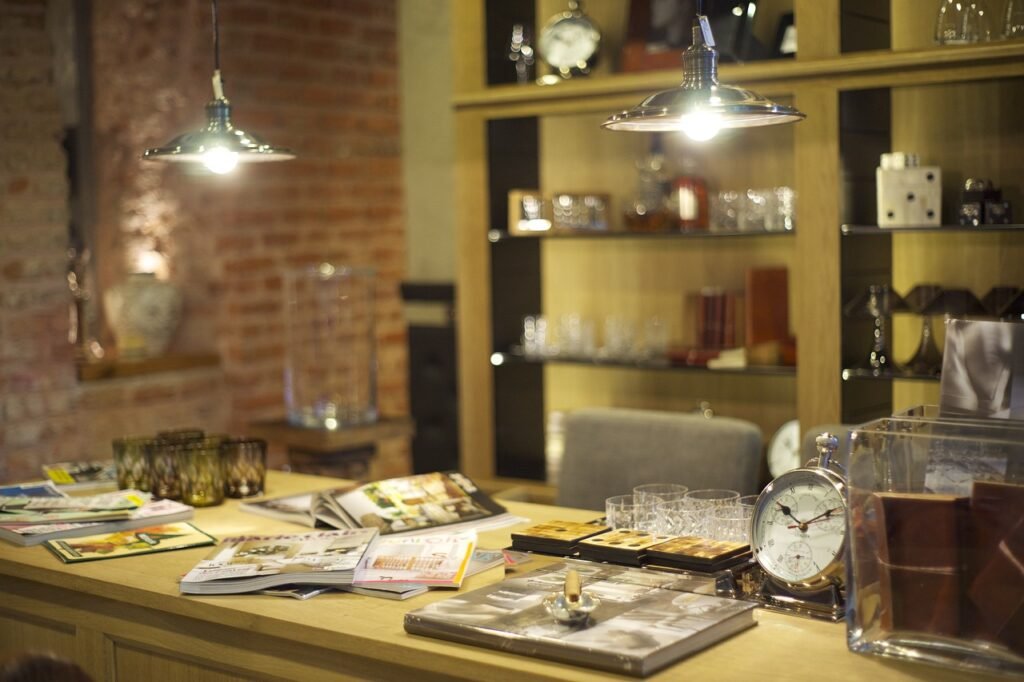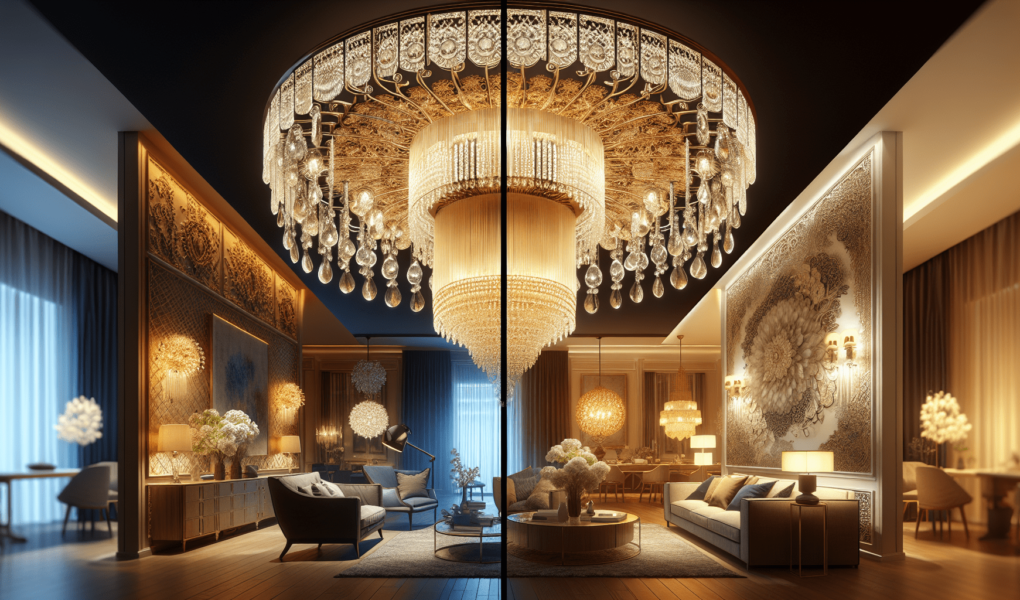Imagine coming home to a beautifully lit space that perfectly reflects your style and enhances the ambiance of every room. With residential lighting design, you have the power to transform your home into a warm and inviting sanctuary. Whether you want to highlight architectural features, create a cozy atmosphere, or showcase your artwork, the right lighting can make all the difference. In this article, we will explore the importance of residential lighting design and how it can elevate your home to new heights of comfort and elegance. So sit back, relax, and let’s illuminate the path to a more captivating living space.
1. Understanding the Basics of Residential Lighting Design
When it comes to designing your home’s lighting, there are several important factors to consider. Residential lighting design plays a crucial role in enhancing the overall ambiance and functionality of your space. By strategically choosing the right lighting fixtures and bulbs, you can create a warm and inviting atmosphere while also meeting your specific lighting needs.
1.1 The Importance of Residential Lighting Design
Residential lighting design is more than just illuminating a space; it is about creating a mood and highlighting key features of your home. Well-designed lighting can enhance the aesthetics of your interior, make the space feel more comfortable, and add depth and dimension to the overall design. It also plays a significant role in creating functional areas and ensuring proper visibility for everyday tasks.
1.2 Types of Lighting Fixtures
In residential lighting design, there is a wide range of lighting fixtures to choose from, each serving a specific purpose. Some common types of fixtures include chandeliers, pendant lights, recessed lights, track lights, wall sconces, and under-cabinet lights. By understanding the unique characteristics of each fixture type, you can effectively choose the right ones for different areas of your home.
1.3 Different Light Bulb Options
Light bulbs come in various sizes, shapes, and colors, each offering different lighting effects. The most common light bulb options include incandescent, halogen, fluorescent, and LED bulbs. Incandescent bulbs provide a warm and soft glow, while halogen bulbs offer a bright and crisp light. Fluorescent bulbs are energy-efficient and long-lasting, and LED bulbs are highly efficient and have a long lifespan.
1.4 Factors to Consider in Residential Lighting Design
To ensure an optimal lighting design for your home, it’s essential to consider various factors. These include the purpose of the space, the amount of natural light available, the color scheme of the room, and the desired atmosphere. Additionally, it’s important to take into account the functionality and practicality of the lighting design, as well as energy efficiency and safety considerations.
2. Enhancing Different Areas of Your Home with Lighting
Different areas of your home require different lighting approaches to create the right ambiance and functionality. Let’s explore how you can enhance specific areas of your home with the right lighting design.
2.1 Kitchen Lighting Design
The kitchen is often considered the heart of the home, and the right lighting can significantly impact its functionality and appeal. In kitchen lighting design, it’s important to consider both task lighting and accent lighting.
2.1.1 Task Lighting in the Kitchen
Task lighting in the kitchen focuses on providing ample illumination for specific work areas, such as the countertops, stove, and sink. Under-cabinet lights, recessed lights, and pendant lights are commonly used for task lighting in the kitchen. By ensuring proper task lighting, you can improve visibility and make food preparation and cooking tasks easier and safer.
2.1.2 Accent Lighting for Kitchen Features
Accent lighting is used to highlight specific features or elements in the kitchen, such as a decorative backsplash or a kitchen island. This type of lighting adds depth and visual interest to the space. Popular choices for accent lighting in the kitchen include track lights, recessed spotlights, and strip lights. By incorporating accent lighting, you can create a focal point and enhance the overall aesthetics of your kitchen.
2.2 Living Room and Dining Room Lighting
The living room and dining room are areas where you often entertain guests and spend quality time with family. The right lighting design can create a welcoming and cozy atmosphere while also highlighting the room’s focal points.
2.2.1 Creating Ambient Lighting
Ambient lighting sets the overall mood in the living room and dining room. This can be achieved through the use of ceiling-mounted fixtures, such as chandeliers or pendant lights. Wall sconces and floor lamps can also contribute to the ambient lighting in these areas. By choosing the right fixtures and placing them strategically, you can create a warm and inviting ambiance.
2.2.2 Highlighting Artwork and Decor
If you have artwork or decorative pieces in your living room or dining room, it’s important to illuminate them properly. Track lighting or recessed spotlights can be used to highlight artwork or a display cabinet. This will draw attention to these special features and add a touch of sophistication to your space.
2.3 Bedroom Lighting Design
The bedroom is a place of relaxation and rest, and the lighting design should reflect this purpose. Consider incorporating the following elements to create a soothing atmosphere in your bedroom.
2.3.1 Creating a Relaxing Atmosphere
Soft and warm lighting is essential for creating a relaxed ambiance in the bedroom. Table lamps or wall sconces with dimmer switches can provide the perfect level of lighting for winding down in the evening. Avoid using overly bright or harsh lighting in the bedroom as it can disrupt sleep patterns.
2.3.2 Task Lighting for Reading and Activities
In addition to ambient lighting, it’s important to have task lighting for reading and other bedroom activities. Bedside table lamps or wall-mounted reading lights are ideal for providing focused illumination while minimizing glare. Ensure that the lighting is directed towards the activity area to avoid unnecessary strain on the eyes.
2.4 Bathroom Lighting Design
Proper lighting in the bathroom is crucial for tasks like grooming and makeup application. It also plays a role in creating a spa-like atmosphere.
2.4.1 Proper Lighting for Vanity Areas
Vanity lighting is essential in the bathroom, as it allows for a clear view while applying makeup or shaving. Wall-mounted sconces or vertical strip lights on either side of the mirror are commonly used for vanity lighting. Placing the lights at eye level helps eliminate shadows on the face and provides even illumination.
2.4.2 Ambient Lighting in the Bathroom
Ambient lighting in the bathroom sets the overall mood and can be achieved through ceiling-mounted fixtures or recessed lights. This general illumination should be bright enough to ensure proper visibility in the space. Consider installing a dimmer switch to adjust the lighting intensity based on your needs.

3. Achieving Energy Efficiency with Residential Lighting
Besides enhancing the aesthetics and functionality of your home, residential lighting design can also contribute to energy efficiency. By making conscious choices in lighting design, you can reduce energy consumption and minimize your environmental impact.
3.1 Understanding Energy-Efficient Lighting
Energy-efficient lighting refers to the use of lighting fixtures and bulbs that consume less energy than traditional options. These energy-saving alternatives provide the same or even better light output while using significantly less electricity. By opting for energy-efficient lighting, you can lower your energy bills and reduce your carbon footprint.
3.2 LED Lighting for Energy Savings
LED (Light Emitting Diode) lighting has gained tremendous popularity in recent years due to its unmatched energy efficiency and longevity. LEDs use up to 75% less energy than traditional incandescent bulbs and have a significantly longer lifespan. They are available in a variety of colors and can be dimmable, making them suitable for various lighting applications throughout your home.
3.3 Motion Sensors and Timers for Energy Conservation
Another way to achieve energy efficiency in residential lighting is by utilizing motion sensors and timers. Motion sensors can be installed in areas where lights are frequently left on, such as hallways or garages. When no motion is detected, the lights automatically turn off, saving energy. Timers can also be programmed to control lighting based on specific schedules, ensuring lights are not left on when not required.
3.4 Natural Lighting and Daylighting Strategies
Maximizing natural lighting is an excellent way to reduce reliance on artificial lighting. Incorporate strategies that allow natural light to enter your home, such as installing larger windows, skylights, or light tubes. Additionally, consider using light-colored paint on walls and ceilings to reflect natural light more effectively. By harnessing natural light, you can create a bright and energy-efficient environment in your home.
4. Design Tips for a Cohesive Lighting Scheme
To create a cohesive and aesthetically pleasing lighting design, consider the following design tips and techniques:
4.1 Layering Light in Different Areas
Layering light involves using a combination of ambient, task, and accent lighting to achieve a balanced and versatile lighting scheme. By layering different types of lighting in each area of your home, you can create depth, enhance visual interest, and meet specific lighting needs.
4.2 Using Dimmers for Versatility
Adding dimmers to your lighting fixtures allows you to adjust the light output based on the desired ambiance and activity. Dimmers provide flexibility and allow you to transition smoothly between bright and soft lighting, enhancing the overall mood and functionality of your space.
4.3 Following Design Principles with Lighting Placement
When placing lighting fixtures, it’s important to follow design principles such as balance and symmetry. A well-planned lighting layout should complement the overall architecture and design of your home. Consider the size and scale of the space, as well as the intended purpose of the lighting, to ensure a harmonious and visually appealing arrangement.
4.4 Considering Color Temperature and Lighting Effects
Color temperature refers to the warmth or coolness of the light emitted by the light bulb. Choosing the right color temperature can greatly impact the ambiance of your space. Warmer color temperatures (around 2700-3000K) create a cozy and intimate atmosphere, while cooler temperatures (around 4000-5000K) produce a crisp and energizing effect. Additionally, consider using lighting effects such as uplighting, downlighting, or wall washing to add drama and visual interest to your space.
4.5 Creating Visual Interest with Light Fixtures
Light fixtures themselves can serve as statement pieces and add personality to your home’s lighting design. Don’t be afraid to incorporate unique and visually interesting fixtures that complement your overall interior design style. From modern and minimalist to traditional and ornate, there are endless options to choose from to create the desired aesthetic impact.

5. Incorporating Smart Technology in Residential Lighting
Advancements in technology have revolutionized the way we interact with and control our lighting systems. By incorporating smart technology, you can automate and personalize your residential lighting design according to your preferences and lifestyle.
5.1 Benefits of Smart Lighting Systems
Smart lighting systems offer convenience, energy efficiency, and enhanced control over your home’s lighting. With smart lighting, you can remotely control your lights through mobile apps, voice commands, or even preset schedules. This allows you to adjust lighting levels, create customized lighting scenes, and even integrate lighting with other smart home devices.
5.2 Wireless Lighting Controls and Automation
Wireless lighting controls eliminate the need for complicated wiring and offer flexibility in terms of adjusting and managing lighting settings. Wireless switches and dimmers allow for easy installation and can be placed wherever you desire. Additionally, automation features enable lights to be turned on or off automatically based on occupancy or external factors such as daylight levels.
5.3 Voice Control and Integration with Smart Home Devices
Voice control is becoming increasingly popular in smart homes, allowing you to control your lighting through voice commands. Integration with virtual assistants such as Amazon Alexa or Google Assistant enables seamless control of your lighting system along with other smart devices in your home. This hands-free approach adds convenience and simplicity to your daily routine.
5.4 Creating Customized Lighting Scenes
One of the greatest advantages of smart lighting systems is the ability to create customized lighting scenes. With a few taps on your smartphone or voice command, you can adjust multiple lights throughout your home to a specific brightness, color, or combination. Whether you’re hosting a party, watching a movie, or simply relaxing, customized lighting scenes can enhance the ambiance and create the perfect mood for any occasion.
6. Safety Considerations in Residential Lighting Design
When working with residential lighting design, it’s important to prioritize safety to prevent accidents and ensure the longevity of your lighting system.
6.1 Proper Wiring and Electrical Safety
To ensure electrical safety, it’s crucial to hire a qualified electrician to install and maintain your lighting system. They will ensure that all wiring is done correctly and up to code, minimizing the risk of electrical hazards. Regular inspections and maintenance checks are also essential to identify and address any potential issues.
6.2 Avoiding Glare and Eyestrain
Proper lighting design should prioritize minimizing glare and eyestrain. Avoid placing bright lights directly in the line of sight or where they can cause reflections on screens or glossy surfaces. Use diffusers or shades to soften the light and distribute it evenly throughout the space. Additionally, consider task-specific lighting to ensure that lighting is adequate for specific activities without creating uncomfortable levels of brightness.
6.3 Lighting for Outdoors and Pathways
Outdoor lighting serves both practical and safety purposes. Properly lit pathways, steps, and entrance areas help prevent accidents and make it easier to navigate in the dark. Consider using motion sensor lights for added security and energy efficiency. Outdoor lighting should also enhance the aesthetics of your outdoor space, creating an inviting atmosphere for entertaining or relaxation.
6.4 Fire Safety and Light Fixture Placement
When selecting light fixtures, it’s important to consider fire safety. Ensure that fixtures are properly vented and that heat-producing bulbs are not placed too close to flammable materials. Follow manufacturer guidelines for wattage and bulb compatibility to prevent overheating. Proper light fixture placement can help reduce the risk of fire hazards and ensure the safe operation of your lighting system.

7. Hiring a Professional for Residential Lighting Design
While some homeowners may prefer to tackle lighting design as a DIY project, there are numerous benefits to working with a professional lighting designer.
7.1 Benefits of Working with a Lighting Designer
A lighting designer brings expertise, experience, and a creative eye to your residential lighting design project. They have in-depth knowledge about lighting techniques, fixtures, and industry trends. A professional can help you navigate the vast array of options available and create a customized lighting design plan that perfectly suits your vision and requirements. Their expertise ensures that your lighting design is both aesthetically pleasing and functional.
7.2 How to Choose a Qualified Professional
When choosing a lighting designer, it’s important to consider their qualifications and experience. Look for professionals with formal training in lighting design or those who are members of recognized design organizations. Review their portfolio to assess their style and see if it aligns with your preferences. Take the time to interview potential designers to ensure that they understand your needs and can effectively communicate their ideas.
7.3 Collaborating on the Design Process
Working with a lighting designer is a collaborative process. Be prepared to discuss your needs, preferences, and budget with the professional. Provide them with information about the architectural elements, furniture placement, and any other factors that may affect the lighting design. Collaboration ensures that the end result is a cohesive and well-executed lighting scheme that enhances your home.
In conclusion, residential lighting design encompasses various elements, from choosing the right fixtures and bulbs to considering energy efficiency and safety. By understanding the basics of residential lighting design and implementing the tips and strategies outlined in this article, you can create a well-lit and visually appealing home that meets your individual needs and preferences. Whether you choose to tackle the design yourself or enlist the help of a professional, a carefully planned lighting design can make a significant difference in your home’s ambiance and functionality.



